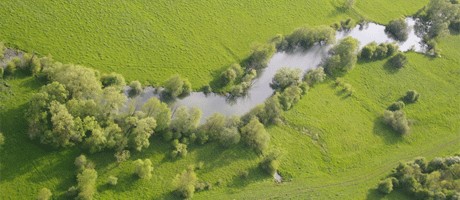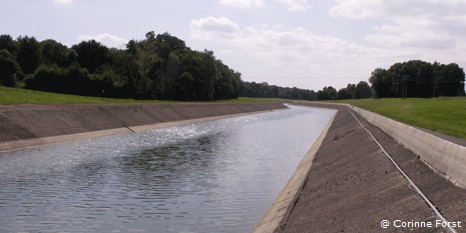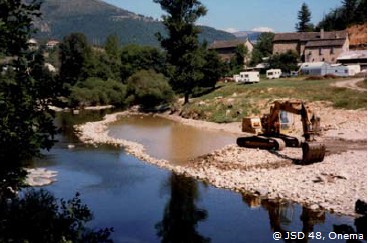Humans alter the shape of rivers for centuries: river channelling, concreting of riverbanks, dam or dikes construction... This deterioration lies at the origin of habitat fragmentation, depletion of aquatic population and aquatic environments services degradation such as flood and drought regulation, self-purification of water, flood plains fertilization or recreational areas... Alterations of morphology and of flow regime has become now one of the main factors responsible for river degradation.
Achieving a good standard of quality for water is the main objective of the 2000 Water Framework Directive. The improvement of hydromorphological conditions and river continuity, transversal and lateral, is necessary for re-establishing the natural ecological process of the river, and contributes to achieving the good water status required by the European directive and to supporting biodiversity. For more information on this topic, you can read this fact sheet on the importance of river dynamics.

Transversal structures, such as dams and weirs in rivers cause disturbances and have impacts on sediments transport, movement of aquatic fauna. In general, the blockage of the sediment transport creates an imbalance in the river dynamics and affects the bed morphology. Running waters are transformed into a series of impoundments of stagnant water that cause uniformisation of flows, temperature changes, increased eutrophication. More detailed information can be found in this document.
The opportunities for the movements of species are drastically reduced by the transversal obstacles, which are impassable to a greater or lesser extent. The fragmentation of their habitats results in reduction of their habitat range and facilitates the isolation of populations. This compartmentalisation prevents any genetic exchanges between different groups of the same species, increases the risks in the event of pathologies and reduces the opportunities for escape and possible recolonisation following accidental disturbances (pollution, etc.).

The straightening and widening of rivers, bank protection, can lead to different impacts such as the diminution of mobility area for the rivers, impact on lateral river continuity, the loss of floodplains as retention spaces for flood water, the removal of species habitats or the loss of connectivity between habitats resulting in loss of biodiversity.

Gravel extraction could also lead to several impacts on rivers, such as a decrease of the total sediment load, channel incision and narrowing. Channel incision can cause vertical and lateral instability, resulting in bank failure. Mining have an impact on water quality and aquatic ecosystems since it leads to resuspension of sediments which can have an effect on light penetration, disturbance of species or loss of habitats.
River restoration can deliver multiple benefits, in various fields (biodiversity, water quality, flood risk, pollution...).
It is a multi-disciplinary task, including hydrology, engineering, geomorphology, ecology and social sciences among others, requiring an adaptative and integrated approach.
Back to homepage

 Glossary
Glossary Resources
Resources